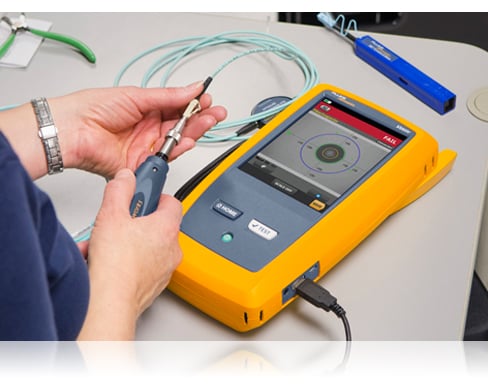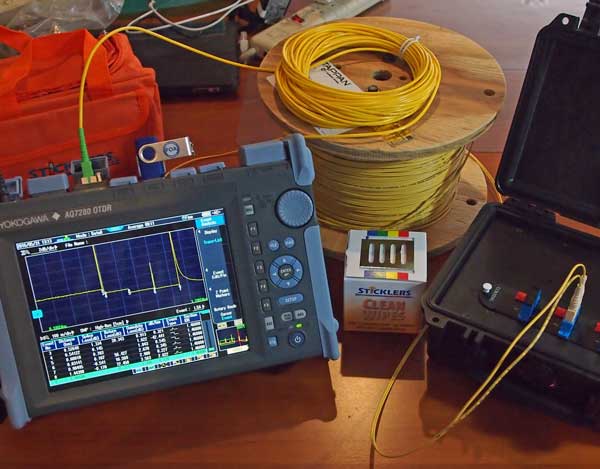Ofda helps with accurate fibre measurement in various applications.
Ofda helps with accurate fibre measurement in various applications.
Blog Article
Unveiling the Secret Use Optical Fiber Examining for Efficient Data Transmission
In the realm of contemporary interaction, optical fibre screening emerges as an essential practice for optimizing data transmission. By utilizing methods such as Optical Time Domain Reflectometry (OTDR) and insertion loss evaluations, network drivers can successfully determine and resolve concerns that might endanger signal honesty. As the need for faster and extra reputable connections continues to rise, the implications of these testing techniques extend past immediate mistake discovery, affecting long-lasting network performance. Comprehending the multifaceted applications of optical fibre testing welcomes a much deeper expedition into its critical role in shaping the future of information interaction.

Significance of Optical Fibre Testing
The relevance of optical fibre screening can not be overemphasized, as it functions as a critical part in ensuring the integrity and effectiveness of data transmission systems. In an age where high-speed communication is extremely important, any type of shortages in fibre optics can lead to considerable data loss and lowered performance. Consequently, extensive screening procedures are vital to confirm the integrity and efficiency of optical cables.
Checking permits the identification of defects such as micro-bends, macrobends, and splice losses that might impede signal high quality. Moreover, it supplies understandings right into the general depletion and transmission capacity capacities of the fiber, making sure that the network fulfills certain functional requirements. Normal testing not just boosts system efficiency however also lengthens the lifespan of the framework by recognizing prospective problems before they rise right into costly failings.

Kinds Of Optical Fibre Tests
Numerous types of optical fiber examinations are carried out to make certain the performance and integrity of fibre optic networks. These tests can be classified into several vital types, each offering a specific function in analyzing the stability of the fiber.
First, Optical Time Domain Name Reflectometry (OTDR) is a prominent test that determines mistakes, mates, and ports within the fibre. By sending out pulses of light and assessing the mirrored signals, specialists can identify issues along the fiber's size.
2nd, insertion loss examinations review the amount of signal loss when light passes through adapters or splices, which is vital for preserving network performance.
Third, return loss tests gauge the quantity of light showed back in the direction of the resource, offering insights right into the top quality of links and potential resources of disturbance.
Additionally, connection examinations make sure that the fibre course is total, permitting service technicians to verify that the fibre is undamaged with no breaks. optical fibre testing equipment.
Finally, visual fault locators utilize noticeable light to identify breaks or extreme bends in the fiber, helping in quick troubleshooting. Collectively, these examinations form a comprehensive technique to keeping optimal performance in fiber optic networks.

Applications in Network Upkeep
In modern telecoms, reliable network upkeep depends heavily on optical fibre testing to identify and remedy problems without delay. Routine testing ensures that the network runs at optimal performance degrees, minimizing downtime and improving customer experience.
Among the primary applications of optical fiber screening in maintenance is the detection of faults, such as breaks, flexes, or incorrect links. Methods like Optical Time Bonuses Domain Reflectometry (OTDR) enable service technicians to locate these issues properly and assess the quality of the fiber web link. Additionally, loss testing confirms the honesty of the optical path, ensuring that signal depletion continues to be within appropriate restrictions.
Routine upkeep screening also assists in safety nets, determining potential troubles before they rise into significant failings. This aggressive technique can conserve companies both time and funds. Throughout upgrades or developments, optical fiber testing ensures that new installations incorporate flawlessly with existing facilities.
Enhancing Information Transmission Integrity
Effective network upkeep with optical fibre screening not just addresses immediate issues however additionally plays a substantial role in improving data transmission reliability. By identifying faults, gauging signal loss, and examining the general problem of fibre optic cables, screening ensures that prospective problems are corrected prior to they intensify right into significant interruptions.
Normal optical fibre testing, such as time-domain reflectometry (TDR) and optical time-domain reflectometry (OTDR), enables service technicians to pinpoint the precise places of breaks, bends, or port concerns within the network. This positive strategy not just decreases downtime yet additionally enhances the efficiency of information transmission by making certain that the paths for signals are clear and operating successfully.
Moreover, screening help in validating adherence to sector criteria and specs, which is vital for preserving the stability of data flow. By making certain that each link fulfills needed thresholds for loss and quality, organizations can strengthen their self-confidence in the integrity of their information networks.
Eventually, buying extensive optical fibre screening not just improves data transmission integrity yet additionally sustains the lasting functional effectiveness of communication frameworks.
Future Patterns in Fibre Screening
Arising technologies are positioned to transform fibre screening, paving the way for boosted effectiveness and accuracy in information transmission diagnostics (fibre testing equipment). As the demand for faster net and higher bandwidth remains to climb, the combination you can look here of advanced devices such as man-made intelligence (AI) and artificial intelligence (ML) is established to transform traditional fibre screening techniques. These technologies will certainly enable anticipating upkeep and automated fault discovery, substantially reducing downtime and improving network reliability
Furthermore, the adoption of Web of Points (IoT) devices will certainly facilitate real-time tracking of fiber networks, enabling instant recognition of you can try these out performance problems. This change towards positive monitoring will decrease disruptions and enhance information flow.
Moreover, technologies in optical time-domain reflectometry (OTDR) and new testing criteria will certainly improve the precision of dimensions, making sure that data integrity is preserved throughout the transmission procedure. The arrival of 5G technology additionally demands the development of much more sophisticated fibre testing strategies to support its high-speed needs.
Verdict
In verdict, optical fibre testing is essential for preserving effective information transmission within interaction networks. Regular screening not just ensures conformity with industry criteria but likewise promotes aggressive maintenance, ultimately contributing to the lasting reliability and efficiency of fiber optic systems.
Report this page